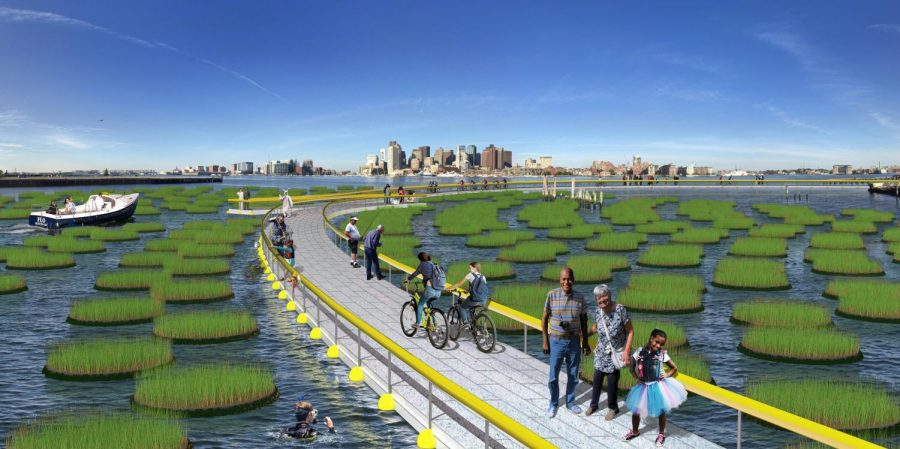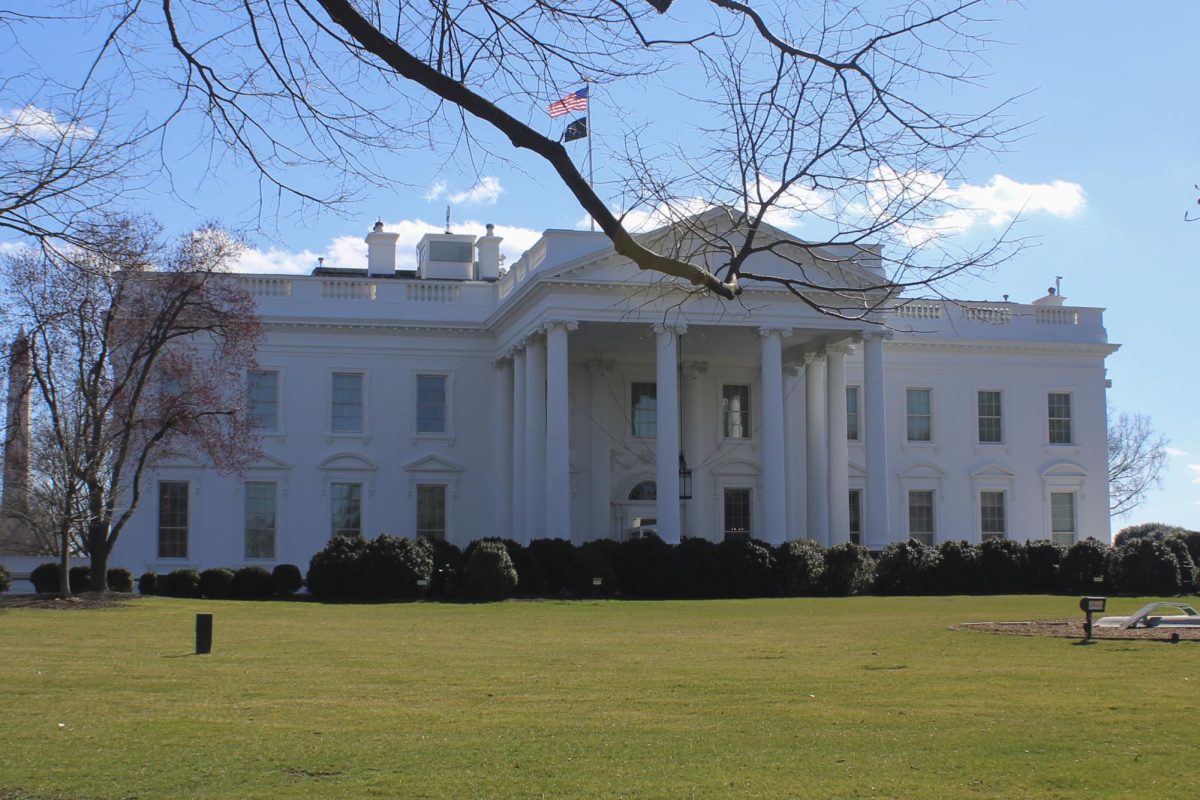NU researchers develop Emerald Tutu to protect Boston’s coast
The tutu could function as a community greenspace, with interconnected walkways and places for other water recreation activities. Photo courtesy of Louiza Wise.
September 7, 2022
One Northeastern professor has a plan to beautify and protect Boston’s shoreline from rising sea levels: a series of public walkways, built upon artificial marshes designed to prevent flooding.
Julia Hopkins, an assistant professor of civil and environmental engineering, is a founding member of the Emerald Tutu project, a proposed network of floating biomass units which mitigate rising sea levels and storm surges, funded by the National Science Foundation.
“We’re somewhat ambitious about what we’re trying to do, but it’s ambition that matches the scale of the problem,” Hopkins said.
Each individual mat within the tutu is composed of biodegradable materials, such as wood byproduct and coconut fiber, and secured with burlap and marine rope. Arranged in a series of concentric rings, the mats can dampen wave energy, effectively functioning as a wetland.
“A lot of these urban areas are built around places that used to be marsh … which means that we have removed what was the original flood defense,” Hopkins said. “The Emerald Tutu was intended to put it back, but put it back in a way that did not displace people.”
The name of the project is a spin on Boston’s Emerald Necklace, a chain of interconnected parks across the city. Like its namesake, the tutu could serve as a community space, said Louiza Wise, the team’s ecological engineer.
“The tutu is going to be, hopefully, ingrained in the community as another infrastructure project that needs continual maintenance and provides jobs and a sense of community,” said Wise, a 2021 Northeastern graduate.
The tutu comes as Boston faces mounting climate pressures. According to the Boston Globe, sea levels in the Northeast could rise as much as two feet by 2050, drastically increasing flooding frequency and severity. East Boston’s low-lying location made it the initial focus of the Emerald Tutu project. Unlike other proposed climate solutions, interconnected biomass units are relatively inexpensive and modular, so they can be deployed and removed in fragments. Hopkins said this will help the “delicate process” of accommodating other interests on the waterfront.
“The challenge with every nature-based solution is getting everyone to agree on a singular thing that can span multiple coastlines,” Hopkins said. “These things tend not to work if you just follow municipal boundaries.”
Though conversations with the City of Boston about the possibility of the tutu have just begun, the community response has been positive.
“We have grassroots community partners and see the vision of the Emerald Tutu as a community access point,” Wise said.
Among those grassroots organizations is Eastie Farm, a non-profit which teaches East Boston residents about climate justice and sustainability through urban gardens. Eastie Farm has previously collaborated with the Emerald Tutu’s project lead, Gabriel Cira, to build a geothermal greenhouse.
“[Climate change solutions] have to actually be responsive to community needs and solicit community feedback,” said Will Hardesty-Dyck, the greenhouse manager. “I think [the Emerald Tutu] is a fantastic project. I’m excited to see where it goes.”
Hopkins estimated that the design of the Emerald Tutu will be finalized in a year, but it will take longer to fully grasp its biochemical processes. Researchers will need to observe each mat through the seasons to understand their life cycles and how they cycle carbon and nutrients.
When Wise joined the project in 2021, this was her primary focus. She had experience studying the usage of constructed wetlands to treat wastewater during her co-op at Floating Island International as a Northeastern undergrad.
“I thought I could use my background and offer up what I had in terms of using wetlands for nutrient reduction and water quality purposes, because that was another goal they had been looking to tap into but hadn’t researched it a ton,” Wise said.
Hopkins has high hopes for the project — she said the tutu has potential in every port city in America. With each new location, the materials could be adjusted to fit local ecosystems.
In the coming months, the tutu will have a larger-scale pilot program and there will be further dialogue with the city and its residents to gauge interest.
“When people, coastal managers and governments look to the future, and what their cities could be in 20 years, 30 years, I want them to think of solutions that mimic what nature had in the past,” Hopkins said. “I want the tutu to be one of those technologies that is considered.”







